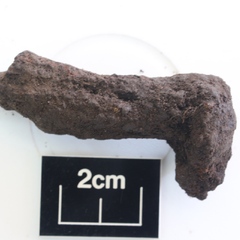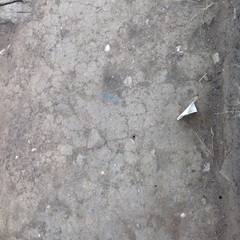- Medieval, potentially 12th century, clench bolt commonly used on clinker- built boats Length 53mm. Plank thickness 30.6mm. Rove d. 28.5mm. Shank width 11.50mm.
Interpretation
-
- Clench bolts function to join overlapping sections of timber, and most commonly used on clinker- built boats, although other uses are known. The nail is passed through the two sections of plank and then through a small iron plate (rove) and hammered over to produce a secure fastening. Given the coastal location of Holy Island and the presence of other material related to fishing, it is most likely that these relate to boats, although sections of boat strakes and planking were often re-used in secondary contexts. There is little that can be said about the type of boats being used, although the local coble tradition of beach-launched vessels used clinker construction. The plank widths range from c.28mm-36mm which allowing for additional thickness due to overlapping strakes seems broadly commensurate with probable boat planking recovered from fragments of 12th century boat-timbers re-used in a dock revetment in Hartlepool (Young 1987)
-
- David Petts
- 3-5-2017
3-D Models
- No models found for this item
Comments
- 1 fragment, Length - 53mm Shank width - 11.50mm Plank thickness - 30.6mm Rove depth - 28.5mm
From Context
-
Context: LDF_3014
- Martin Braddock 21-6-2016

